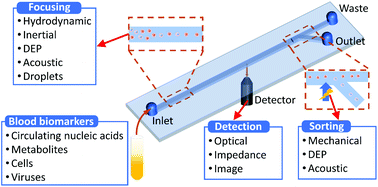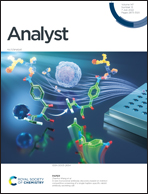Microfluidic flow cytometry for blood-based biomarker analysis
Abstract
Flow cytometry has proven its capability for rapid and quantitative analysis of individual cells and the separation of targeted biological samples from others. The emerging microfluidics technology makes it possible to develop portable microfluidic diagnostic devices for point-of-care testing (POCT) applications. Microfluidic flow cytometry (MFCM), where flow cytometry and microfluidics are combined to achieve similar or even superior functionalities on microfluidic chips, provides a powerful single-cell characterisation and sorting tool for various biological samples. In recent years, researchers have made great progress in the development of the MFCM including focusing, detecting, and sorting subsystems, and its unique capabilities have been demonstrated in various biological applications. Moreover, liquid biopsy using blood can provide various physiological and pathological information. Thus, biomarkers from blood are regarded as meaningful circulating transporters of signal molecules or particles and have great potential to be used as non (or minimally)-invasive diagnostic tools. In this review, we summarise the recent progress of the key subsystems for MFCM and its achievements in blood-based biomarker analysis. Finally, foresight is offered to highlight the research challenges faced by MFCM in expanding into blood-based POCT applications, potentially yielding commercialisation opportunities.

- This article is part of the themed collection: Analyst HOT Articles 2022


 Please wait while we load your content...
Please wait while we load your content...